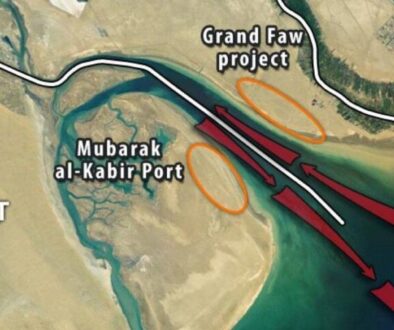Introduction
For nearly eight decades, the U.S. dollar has served as the bedrock of international trade and finance, a position fortified by post-World War II economic structures and geopolitical alignments. Today, however, there is an accelerating shift away from dollar-centric transactions, driven by geopolitical realignments, economic considerations, and technological advancements. This phenomenon, known as de-dollarization, presents profound implications for global finance, including strategic challenges and opportunities for banks and central banks across the Arab region.
Historical Context: How Did the Dollar Achieve Dominance?
The supremacy of the dollar can be traced back to the Bretton Woods Conference of 1944, establishing the dollar as the world’s primary reserve currency linked directly to gold. When President Nixon severed the dollar’s convertibility to gold in 1971, the petrodollar system emerged, with Middle Eastern oil producers, led by Saudi Arabia, pricing oil exclusively in dollars. This reinforced global reliance on the U.S. currency, embedding it deeply into the infrastructure of international trade and finance.
Arab nations played a pivotal role in solidifying dollar dominance, especially through extensive oil exports denominated in dollars, providing enormous liquidity and demand for the currency globally. For decades, this alignment benefited the region, providing financial stability, liquidity management simplicity, and substantial investment opportunities.
The Current Wave of De-dollarization: Drivers and Motivations
The shift away from the dollar has intensified in recent years due to several converging factors. Geopolitical tensions, particularly the conflict between Russia and Ukraine and subsequent Western sanctions, highlighted the vulnerabilities of dependence on the U.S. dollar. Countries subject to sanctions, or fearing potential exposure, began actively seeking alternatives to insulate their economies from dollar-related risks.
Simultaneously, the economic influence of emerging blocs, notably the BRICS nations (Brazil, Russia, India, China, and South Africa), has sparked renewed debate about adopting alternative international reserve currencies. The recent expansion of BRICS to include Saudi Arabia and the UAE underscores this trend’s particular resonance within the Arab world. The prospect of using currencies like the Chinese yuan in oil trade between the Gulf Cooperation Council (GCC) nations and China has raised considerable interest.
Emerging Alternatives to the Dollar
Among the leading contenders challenging dollar dominance is the Chinese yuan. Beijing has actively promoted yuan-denominated trade, particularly through bilateral agreements with trading partners across Asia, Latin America, and increasingly the Arab region. Saudi Arabia and the UAE have already begun exploring yuan-based oil transactions, driven by strategic economic diversification policies and strengthened bilateral ties with China.
Additionally, BRICS nations are evaluating the possibility of a common currency designed explicitly to reduce dependence on the dollar. Although practical challenges around liquidity and governance remain substantial, the concept signals a significant symbolic shift in the global monetary landscape.
The proliferation of Central Bank Digital Currencies (CBDCs) is also significant. These digital currencies offer efficient, secure cross-border payments, facilitating easier transitions away from traditional dollar-centric mechanisms. The UAE and Saudi Arabia’s joint “Aber” project, alongside participation in the mBridge initiative, exemplifies regional leadership in exploring practical, technology-driven financial alternatives.
Implications of De-dollarization for the Arab World
The Arab banking sector finds itself at the center of global monetary shifts, facing both risks and opportunities. Gulf countries, historically intertwined with dollar-based financial systems, are re-evaluating their strategic economic alignments. Saudi Arabia and the UAE, as active participants in the evolving landscape, are diversifying their currency exposures through strategic foreign reserve management and bilateral trade agreements in non-dollar currencies, primarily the yuan.
For central banks in the region, this shift necessitates adjustments in monetary policy frameworks, reserve management strategies, and enhanced financial infrastructure to accommodate a more diversified currency environment. Sovereign wealth funds (SWFs) across the Gulf region, such as Saudi Arabia’s Public Investment Fund (PIF) and the UAE’s Mubadala and Abu Dhabi Investment Authority (ADIA), have increasingly sought diversification beyond traditional dollar-denominated assets, signaling broader strategic shifts.
Challenges and Constraints of De-dollarization
Despite momentum towards alternative currencies, significant barriers remain. The liquidity, convertibility, and deep capital markets that underpin the dollar’s dominance are unmatched by other currencies. The yuan, despite its growth, still faces restrictions on convertibility and global acceptance, limiting its immediate potential to fully replace the dollar.
For Arab banks and financial institutions, transitioning away from a predominantly dollar-based system introduces complexities around managing foreign exchange risks, payment settlement processes, and liquidity management. Additionally, confidence in alternative currencies, especially under conditions of economic stress or geopolitical uncertainty, remains tentative.
Case Studies: Lessons for Arab Banks and Economies
Russia’s recent experiences provide valuable insights. Following sanctions, Russia increased its yuan-based transactions, reducing exposure to Western financial systems. Similarly, India’s rupee-based transactions with Russia illustrate practical adaptations to geopolitical pressures.
Within the region, Saudi Arabia’s early exploration of yuan-denominated oil contracts offers preliminary lessons about managing foreign exchange risks and leveraging strategic alliances. Conversely, economies heavily dependent on external borrowing and dollar-based debt, such as Egypt, highlight vulnerabilities and underscore the urgency of economic diversification and currency risk management.
Strategic Recommendations for Arab Banks and Policymakers
Arab financial institutions and policymakers must approach de-dollarization proactively and strategically. Central banks should enhance their financial infrastructure to facilitate multi-currency transactions seamlessly. Strengthening bilateral financial agreements and building capabilities in handling alternative currencies, particularly the yuan, will be critical.
Diversifying foreign reserves through strategic allocations to multiple major currencies and digital assets, including CBDCs, is essential for maintaining financial stability and flexibility. Furthermore, Arab banks should cultivate expertise in currency risk management and invest in robust technological infrastructure to support digital currency initiatives and facilitate cross-border payments beyond the dollar.
Policymakers must foster regional collaboration among central banks, enabling coordinated responses to global monetary shifts. A collective regional strategy will enhance the Arab world’s negotiating power and resilience against currency volatility.
Conclusion
The global financial landscape is experiencing fundamental shifts as reliance on the U.S. dollar begins to wane under geopolitical, economic, and technological influences. For the Arab banking sector, this shift represents both a strategic challenge and an opportunity to assert greater financial autonomy and economic influence. Arab banks, central banks, and policymakers should embrace proactive measures, carefully weighing the benefits of currency diversification and innovation against the complexities of navigating unfamiliar financial waters.
Ultimately, adopting a measured and strategic approach to the shifting global monetary order will ensure Arab economies remain resilient and influential in an increasingly multipolar financial environment.



